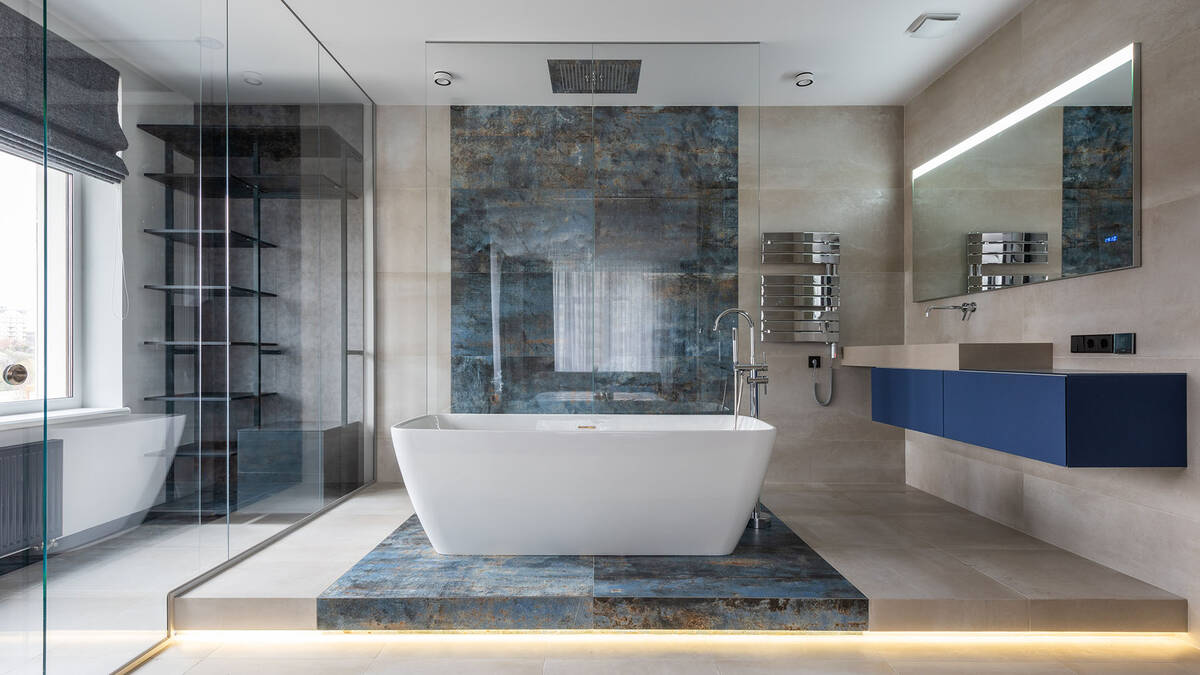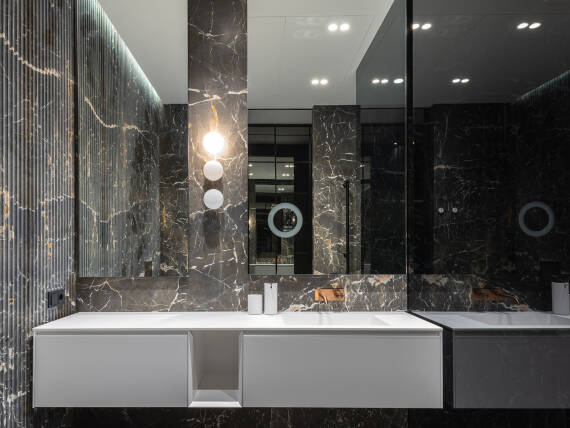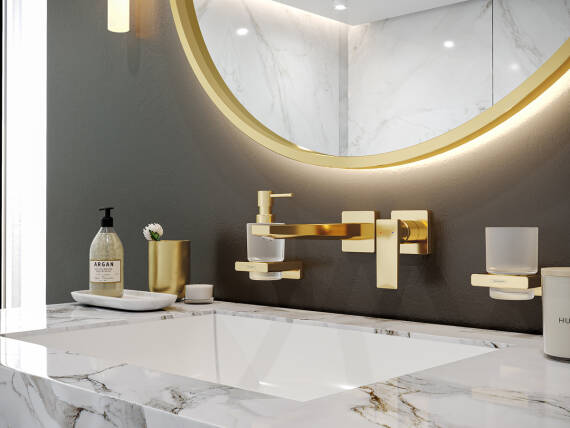The beauty and functionality of marble
The bathroom as a luxury space: marble, the element for fans of design
Marble is a fascinating material. Its has a striking look. It is highly functional and has impressed people for more than two-and-a-half thousand years. In high-end interior design, the premium natural stone is perfectly crafted to produce indulgent design. In the bathroom, marble is synonymous with everyday luxury.

Marble in the bathroom: plenty of ways to use it
Marble is robust, easy to clean and versatile. It can be accurately adapted to suit a room’s architectural features. As such, there are many ways to use marble in the bathroom:
- As a wash basin unit
- As a wash basin
- As flooring
- As wall panels
- As a windowsill
Each stone slab is a unique piece, so marble can make your bathroom a very personal place.
A brief journey through history
Marble has played a key role as far back as the ancient world. From the Venus de Milo to the Acropolis, historical art and architectural masterpieces have been made of it. Sculptors in the Italian Renaissance were inspired by white Carrara marble: Michelangelo used it to create his "Pietà" and other works.
Marble has represented monumentality and luxury throughout all stylistic periods. In interior architecture, Carrara marble is still seen as the benchmark. It was used to clad the lobbies of the World Trade Center.
It also gives the atrium of the new One World Trade Center its white sheen: Architect Santiago Calatrava opted for marble from South Tyrol for the spectacular portal to the ‘Ground Zero’ subway station beneath One WTC.
Hundreds of types of marble – each one attractive in its own way

Marble can be refined in many ways: grinding, polishing, satin finishing, brushing. Left unprocessed, it creates an antique-like look and feel. But what makes marble so versatile as a design element – especially in the bathroom – is it comes in many types, all of which have their own allure:
- The classic Bianco Carrara impresses people with its radiant white colour. Its mineralisation creates colourful marbling effects. Design tip: Go for texture and pair it with pure white accents.
- Black is beautiful. You could even say it’s exciting with Nero Marquina in the bathroom. The black stone features eye-catching white veins and looks highly effective when matched with colourful decorative elements.
- Verde Guatemala is cool, elegant and deep green. Its serene effect is perfect for large wall surfaces. Combine it with gold or brass to add a sense of grandeur to your bathroom.
- The brown Marron Emperador brings warm, earthy tones and harmony to your bathroom. Use it to strike a contrast between light furnishings or light surfaces.
More than 50 types of marble are mined in Carrara alone – in all colours and shades. Hundreds of other types of marble emerge from quarries worldwide. However you want your luxury marble bathroom to be, the sky’s the limit when it comes to implementation.
Marble in the bathroom: pros & cons
Marble is a material like no other. Marble surfaces have a unique texture. They can round off any bathroom design with their natural shine. Marble is luxury. But it comes at a cost.
There are plenty of ways to use this premium natural stone as a design element. Marble tiles are available in all shapes and sizes, and each element has its own marbling effect. This is what gives marble surfaces their unusual look.
From a functional perspective, there are benefits to using marble tiles in the bathroom and shower: They are easy to clean and very hygienic. When it comes to flooring, they are also more hard-wearing than ceramic tiles or wood.
As a basic rule, marble is highly suitable for use in wet rooms. But it does require care. It doesn’t like it if liquids are left standing on its surface. So marble in the bathroom should be regularly polished and sealed. And, although smoothly polished marble looks elegant, it is slippery when wet. Specialised surface treatments are one solution to this problem.
A material that makes all the difference!
As a design element, marble meets the highest standards when it comes to appearance and functionality. If treated properly, it is easy to care for – even when used on a daily basis. And: Marble gives you plenty of options. After all, the material created by Mother Nature is available in a wide variety of types and price categories.Frequently asked questions about using marble in the bathroom
Marble boasts a natural shine and sensational texture. No two marble elements are the same.
There are several hundred types of marble. The most famous ones include Bianco Carrara, Verde Guatemala, Nero Marquina and Marron Emperador.
Marble can be used as wall panels and flooring, as wash basin counter tops or wash basins.
Marble is hard-wearing and easy to clean, and its unusual look makes it the perfect material for design lovers with the highest standards.
Marble requires the right care: It needs to be regularly polished and sealed. So it can be quite costly as a bathroom material.

Luxury design element for the highest standards
Make marble look even more stylish by pairing it with high-quality taps.
Be inspired
Authorised dealers